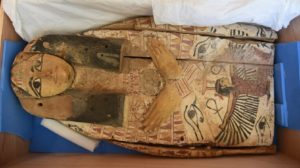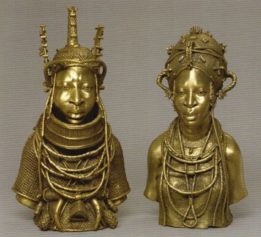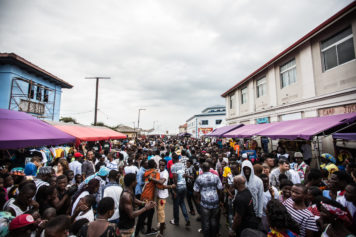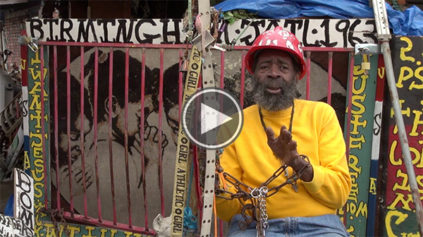
The Israeli Ministry of Foreign Affairs handed over to Egypt two ancient relics that reached Israel. (CNN)
Egypt has recovered two of its ancient and priceless artifacts, raising questions as to how much more stolen African history is yet to be recovered.
In a show of improving relations between the two countries, Israel returned two sarcophagus covers to Egypt on Sunday, as CNN reported. Priceless works of art with elaborate decorations and paintings, one of the lids date back to somewhere between 1600 to 1300 B.C., while the other is from 900 to 700 B.C.
According to the Israeli Ministry of Foreign Affairs, the covers were smuggled into Israel, and the Israeli Antiquities Authority seized them four years ago. The items had been stolen at an unspecified time, according to CNN. It is believed that the return of the ancient Egyptian artifacts could help spur cooperation between the two nations, highlighting the ways in which such missing pieces of history are used as political bargaining chips.
A centuries-long practice, the pillaging, looting and destruction of African antiquities continues to this day, with robbers, art dealers and even souvenir-seeking tourists doing their part to chip away at a continent’s cultural heritage. According to the International Council of Museums, the illegal trafficking of cultural property, art and archaeological objects — which violates national and international laws — is a complex issue covering a broad range of practices. Examples include theft from museums, monuments, religious sites and other places, illegal excavations and the removal of cultural objects during military occupation and armed conflicts. Other examples include the illicit import and export of artifacts, the illegal transfer of ownership of cultural property, trafficking in fake and forged artifacts, and the production, trade and use of forged documentation.
As National Geographic reported, the problem is so extreme that certain types of sacred, traditional items have vanished from the continent, the objects reappearing in private collections, universities and museums outside of Africa. Meanwhile, funerary objects are robbed. Some countries such as Nigeria, Kenya and Mali have taken steps to counter this trend, with the goal of tracking down and repatriating their lost national treasure.
“Losing your cultural heritage robs you of your pride,” Mzalendo Kibunjia, the National Museum of Kenya’s assistant director of sites and monuments, said to National Geographic. “We must get it back.”
Although placing a definite dollar amount on the value of lost cultural artifacts is an elusive task, it is estimated that the trade is worth several billion dollars annually, and on par with the illegal arms trade.
As The New York Times reported last year, Congolese businessman and art collector Sindika Dokolo is on a mission to force Western dealers, auction houses and museums to return African art that was stolen during the colonial era. To that end, Dokolo has created a task force to identify stolen items — using researchers and dealers to examine archives and records — and threaten the owners with a lawsuit if they refuse to sell the items to him at their purchase price.
“Works that used to be clearly in African museums must absolutely return to Africa,” Dokolo told The New York Times. “There are works that disappeared from Africa and are now circulating on the world market based on obvious lies about how they got there.”
Dokolo, who has a collection of over 5,000 items stored in Angola and Belgium, hopes to place his collection on public display in Porto, Portugal.
“Today there is not a single museum in the world which has managed to really value classical African art,” he added. “Sotheby’s and Christie’s mostly capitalize on how important African art has been in the modernization of European art, in terms of its influence on artists like Picasso or Braque.”
Meanwhile, the museums of the West are a treasure trove of Africa’s plundered wealth and historical and cultural legacy.


